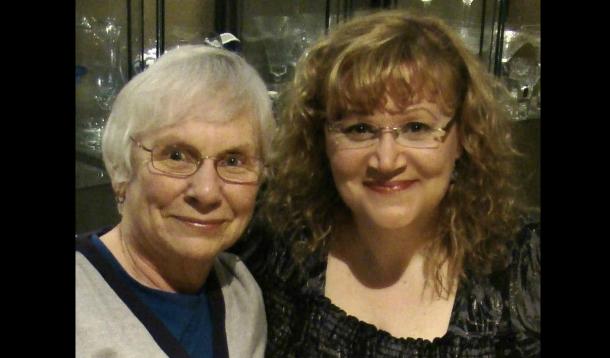
Pictured above is my mother and I in 2013 during our birthday celebration. Our birthdays are 4 days apart and we happen to have the same zodiac sign. The Taurus strong-willed nature isn’t the only thing my mother and I have in common. We also share an on-going concern for our breast health.
When my mother was 47, her doctor found a pea-sized lump in her breast during a routine baseline mammogram. Luckily, her cancer was found at an early stage and it was treated with a lumpectomy and radiation. Today, I am happy to say she has been a breast cancer survivor for 25 years.
Ever since my mother's diagnosis, I've been aware that I would be considered "high-risk" for this disease because of my genetic history and as a result, my adult life has been full of routine mammograms. Both my mom and I are diligent about our breast health. Breast cancer screening doesn't need to be a daunting experience.
I prefer to view my yearly mammograms as part of my normal health check-up routine, like going to the dentist or getting my vision checked. My doctor has recently recommended adding MRI to the mix. There are great programs here in Ontario to remind you to make your breast screening part of your health routine like the program to help woman who are in the high risk category for breast cancer. The Ontario Breast Screening Program (OBSP) has a High Risk Screening Program for women who are at "high-risk" for breast cancer.
October is breast cancer awareness month. Breast cancer is the most common cancer affecting Canadian women. Statistics say that one in nine Canadian women will experience breast cancer in her lifetime. Approximately 34,000 women in Ontario are considered at high risk for breast cancer. Women at high-risk tend to develop breast cancer at an earlier age and their breast cancers tend to be more aggressive than cancers diagnosed in women at average risk.
Ontario has made inroads with high risk screening for breast cancer, so women between ages 30-69 who are considered "high-risk" for breast cancer are now being screened with the combination of MRI and mammography to detect cancer in the earlier stages. They also receive the benefits of organized screening which include: correspondence, navigation and reassurance.
It’s important to know if you’re at high-risk for developing breast cancer, so check the list below and talk to your doctor for a referral and screening options if you think you fall into this category.
Women are considered high risk if:
![]() They have a genetic mutation that puts them at high risk for breast cancer.
They have a genetic mutation that puts them at high risk for breast cancer.
![]() They have refused genetic testing, and have a parent, sibling or child with a genetic mutation that puts them at high risk for breast cancer.
They have refused genetic testing, and have a parent, sibling or child with a genetic mutation that puts them at high risk for breast cancer.
![]() They have a family history that indicates a lifetime risk of breast cancer that is greater or equal to 25 percent confirmed through genetic assessment.
They have a family history that indicates a lifetime risk of breast cancer that is greater or equal to 25 percent confirmed through genetic assessment.
![]() They received radiation therapy to the chest before 30 years of age and at least eight years ago as treatment for another cancer or condition (e.g., Hodgkin’s disease).
They received radiation therapy to the chest before 30 years of age and at least eight years ago as treatment for another cancer or condition (e.g., Hodgkin’s disease).
There are currently 30 OBSP High Risk Screening Centres across Ontario. You can find a location near you by visiting Cancer Care Ontario.
Now that you know the risks to your breast health why don't you join me and my mother in our stubborn habit of keeping our breast health in check? Talk to your doctor if you think you maybe "high risk" and share this post and the High Risk Screening Program with the wonderful women around you to inspire them to be diligent about their breast health too.
Your bosom buddy,
Wanda Lynne

This is proudly sponsored by our friends at Cancer Care Ontario.
www.cancercare.on.ca